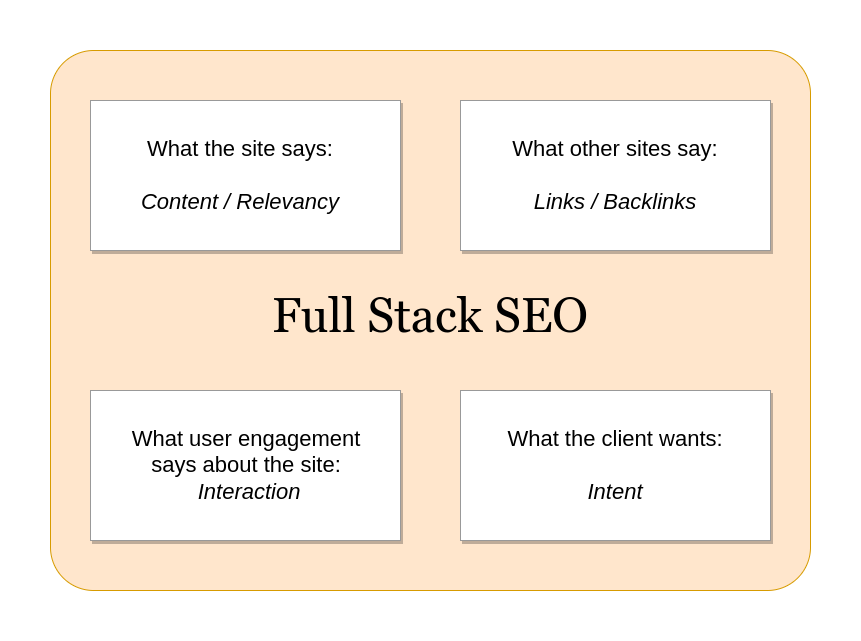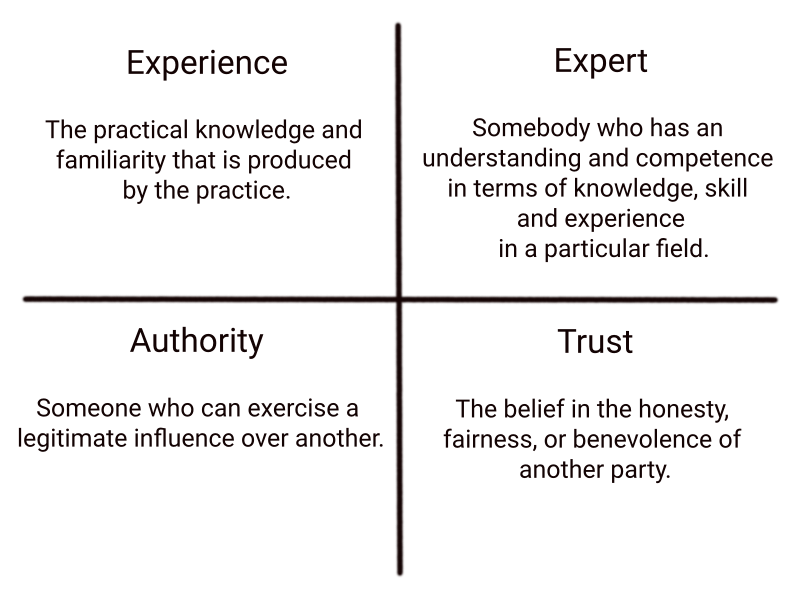Part of: SEO Best Practices
Part of: Search Engine Algorithms
Published:
by Wayne Smith
E-E-A-T is a set of algorithms developed by Google over years. The acronym is decoded as experience, expertise, authority, and trust; But, the meaning algorithmically needs to be decoded and differs from the entities the acronym is made of. The acronym suggests that everybody has E-E-A-T but algorithmically they do not.
Relevancy is described as the "usefulness of certain information in the context of a given topic," which is like beauty is in the eye of the beholder.

A web page may be considered relevant for certain information and linked to another page. A web page may be considered relevant for certain information and read by a user. Different sites and users may be looking at different information, which they consider as useful information in the context of what they need. Relevancy depends on the intent of the audience, and other sites are an audience. How other sites engage with the information is a ranking factor.
Google's algorithms make sense when you take into account their three pillars of search: What a site says about itself, What other sites say about it, and What users say about it.

The "art of decoding what Google says," is not mathematical or logical -- it compares to decoding political or legal speak. They speak from a public relations perspective, using terms to persuade and make Google look good in the eyes of the public -- reviewed by both marketing and legal.
The E-E-A-T acronym is Public Relations 101. Everybody, (Authors and Publishers), has experience, expertise, authority, and trust on some topics -- everybody is going to get a reward from Google for their content! Ya, Google, give us E-E-A-T.
Algorithms however are mathatical based on looking at what materials and coding are presented on websites.
Off-site References and E-E-A-T
Authority apart from its legal meaning is influence. Influence can be measured and qualified on social media and user-generated sites as the number of followers, and engagements on the site. Influence does not take place without trust. But, in addition, trust can be qualified by transparency in who the entity is and how they can be contacted.

A link from the profile page needs to point to the site and the site should have a link with the ref="me" attribute or schema sameAs for the author/brand entity.
It should be noted, that while E-E-A-T is classified by Google as a qualifier, the backlinks are ranking factors. There is no way to determine if E-E-A-T is a ranking factor because it does not exist without backlinks or off-site references.
Without the reciprocal links, bots may have trouble attributing the E-E-A-T to the correct entity. Anybody could link to a massive social media account with a rel="me" attribute, or add an author sameAs in the schema, the reciprocal link from the profile page is required; except when trademarks or other information is present say in a press release for the bot to have confidence it knows the entity being spoken of ... or the entity that is influencing the content of the press release.
Relevancy from the posts
The URL for the profile has links to the posts associated with the account, and links from the posts to the profile page. The sameAs URL provides relevancy to the website which is reciprocal.